Best Kitesurfing Spots in Martinique
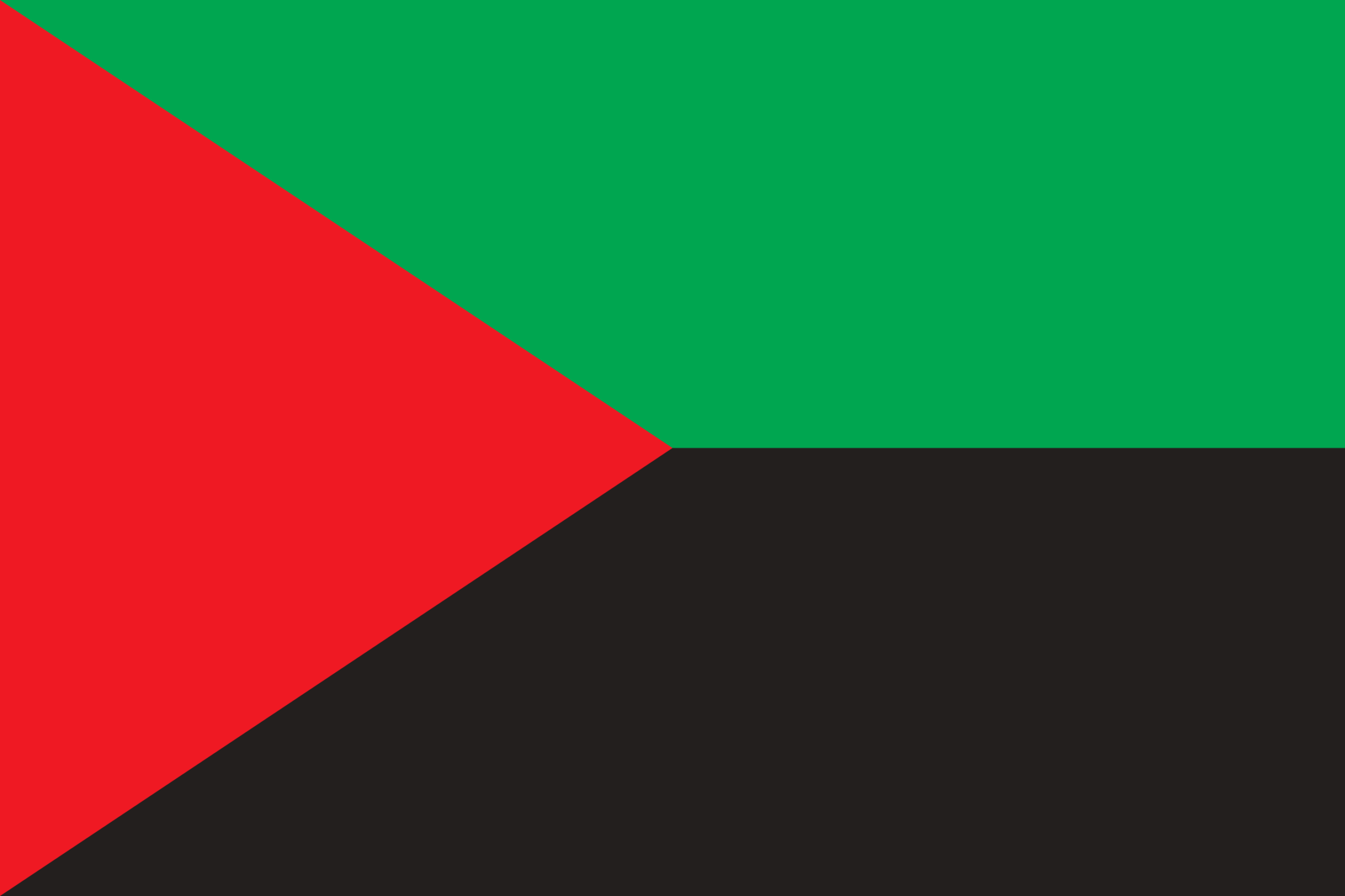
Martinique—the “Island of Flowers”—isn’t just a Caribbean paradise for rum and beaches. For kitesurfers, this French overseas territory is one of the most underrated gems in the Lesser Antilles. With consistent trade winds from December to June, warm turquoise lagoons, and spots ranging from butter-flat water to challenging wave zones, the best kitesurfing spots in Martinique offer something for every rider, whether you’re just starting out or throwing megaloop kiteloops.
What makes Martinique special? Unlike some Caribbean destinations that get overhyped and overcrowded, Martinique maintains an authentic vibe. You’ll find quiet lagoons where you might be one of only a handful of kiters on the water, protected shallow areas perfect for learning, and a unique blend of French-Caribbean culture that means excellent food and friendly locals. This guide breaks down everything you need to know about the island’s top kitesurfing locations, wind conditions, best seasons, and insider tips to make your trip epic.
Quick Takeaways
- Pointe Faula (Le Vauclin) is Martinique’s most famous kite spot with flat water and consistent winds
- Best kitesurfing season: December through June with peak conditions January to May
- Wind conditions: Trade winds blow E-NE at 15-25 knots, ideal quiver is 9-12m kites
- Water temperature: A balmy 25-30°C year-round—no wetsuit needed
- Cap Chevalier and Anse Michel offer stunning scenery and less crowded conditions
- Tartane and Anse l’Etang provide excellent spots for intermediate to advanced riders
- Multiple kite schools across the island offer lessons, rentals, and boat access to remote spots
Understanding Martinique’s Kitesurfing Geography
The Atlantic Coast Advantage
Martinique’s Atlantic coast, especially the southern section, is the prime territory for kitesurfing on the island. The geography here is perfect: the island sits in the path of the reliable northeast trade winds, and the southeastern coast features numerous protected lagoons formed by coral reefs. These natural barriers create flat-water paradises inside while breaking down the Atlantic swell.
The island measures roughly 60km by 30km, which means you’re never more than a 45-minute drive from your accommodation to any kite spot. The north features volcanic landscapes with black sand beaches and the imposing Montagne Pelée, while the south transitions to flatter terrain with coconut groves and those postcard-perfect white sand beaches framed by turquoise water.
Why the Southeast Dominates
Most of the island’s premier kitesurfing locations cluster around the southeastern coast between Le Vauclin and Sainte-Anne. This isn’t coincidental. The area experiences particularly strong winds due to a cape effect between the Martinique archipelago and nearby Dominica. The channel between the islands essentially funnels and accelerates the trade winds, creating more consistent and slightly stronger conditions than you’d find on other parts of the coast.
The southeast also benefits from extensive coral reef systems that create natural lagoons. These protected areas offer flat water when the ocean outside might be churning with 2-meter swells. For kiters, this means you can practice tricks, work on transitions, or just cruise without dealing with chop and waves.
Wind and Weather: When to Visit
The Trade Wind Season
Martinique experiences trade winds from December through June, and this is when you want to plan your trip. These aren’t the gusty, unpredictable winds you might deal with in some locations. Trade winds are remarkably steady, blowing from the east-northeast at 15-25 knots most days during the season.
The optimal window is January through May, with December and June being slightly less reliable as the wind season starts and ends. Don’t expect every single day to be windy—you’ll encounter some days with light or no wind, but these calm periods rarely last more than a day or two.
Kite Selection and Gear
For Martinique, pack a two-kite quiver centered around 10-12m. The ideal quiver is 10/12m or 11/14m, depending on your body weight and riding style. I’d recommend bringing:
- 9m or 10m for the windier days (20-25+ knots)
- 12m or 14m for lighter sessions (15-20 knots)
Twin tips work great for the flat-water lagoons, but if you’re planning to explore spots with shore break or venture outside the reefs, a directional board adds versatility. And here’s the best part: water temperatures stay between 25-30°C, so you can leave the wetsuit at home. Board shorts or a bikini, reef booties, and lots of sunscreen are all you need.
Off-Season Considerations
July through November is hurricane season in the Caribbean. During these months, wind becomes unpredictable, rain increases significantly, and you risk having your trip disrupted by tropical weather systems. The trade winds essentially disappear, replaced by variable breezes that aren’t reliable for kitesurfing. Save your vacation days for the December-June window.
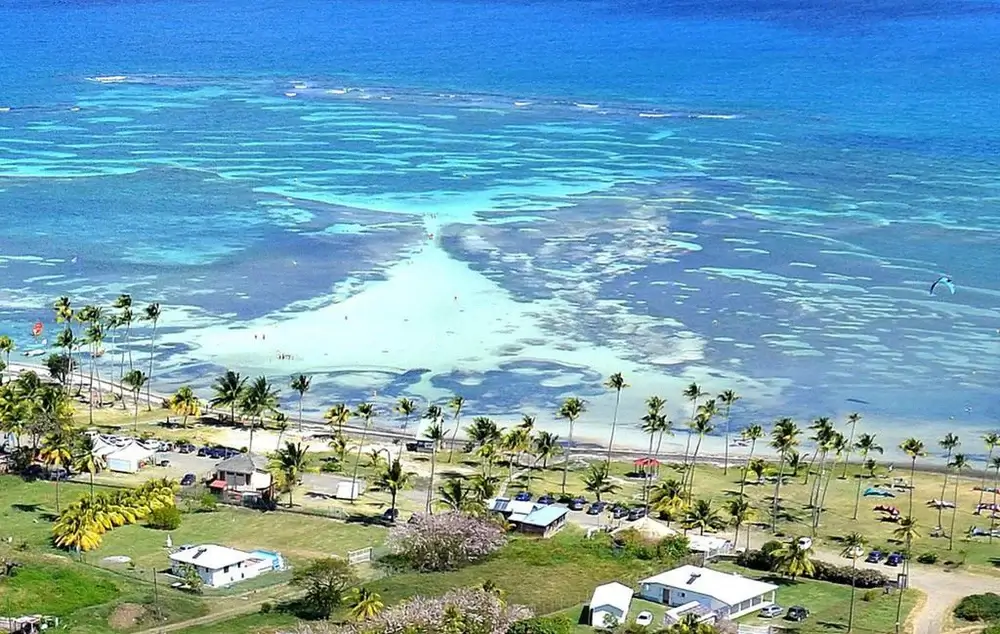
🏄 Pointe Faula (Le Vauclin)
Skill Level: Beginner to Advanced | Water Type: Flat lagoon | Bottom: Sand | Launch: Beach
Pointe Faula is the reference spot for kitesurfers in Martinique and the most famous location to practice the discipline. Located in Le Vauclin on the southeastern coast, this spot has earned its reputation for good reason.
What Makes It Special: The lagoon at Pointe Faula is massive and incredibly shallow for the first 100+ meters offshore. We’re talking waist to chest-deep water over a soft sandy bottom. This shallow lagoon features crystal-clear water with steady wind, making it perfect for beginners and freestyle riders. The flat water is ideal for practicing unhooked tricks, learning your first jumps, or just cruising without worrying about chop.
The spot works across a wide wind range. When you’re on the water, you’ll notice the wind is slightly side-onshore, which makes launching and landing straightforward. The reef breaks far offshore, so you get protection from waves while still maintaining good wind.
Downsides: Popularity means crowds. Le Vauclin is often quite populated with kite enthusiasts, especially during peak season weekends. You’ll share the lagoon with other kiters, windsurfers, and sometimes swimmers near the beach. The shallow water that makes it perfect for beginners also means intermediate riders might feel cramped if they want space for big jumps.
Facilities: Multiple kite schools operate from Pointe Faula, offering lessons, equipment rental, and storage. You’ll find parking (can fill up on weekends), basic restaurants, and shops nearby in Le Vauclin village. The town has that authentic Martinique fishing village vibe—colorful boats, friendly locals, and excellent accras (Caribbean fritters) from beachside vendors.
👉 Insider Tip: Arrive early on weekends and holidays to secure parking and get the best wind before the crowds arrive. Weekdays during February-March offer the best combination of consistent wind and fewer people on the water.
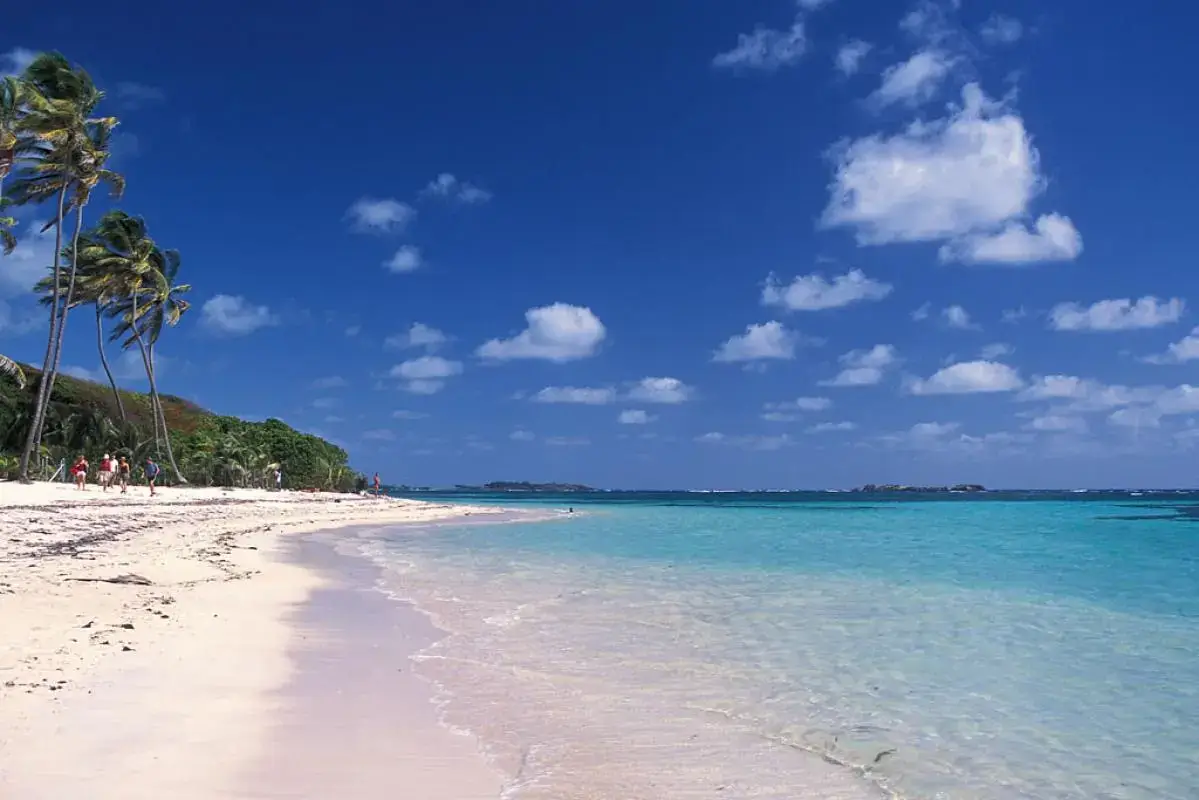
🏄 Cap Chevalier (Anse Michel)
Skill Level: Intermediate to Advanced | Water Type: Lagoon with some chop | Bottom: Sand and coral | Launch: Beach
Cap Chevalier, particularly the Anse Michel section, is where you go when you want stunning scenery with your kitesurfing. This spot combines isolation, turquoise water, fine white sand, shade from coconut groves, waves in the distance, and a lagoon of incredible color—all on one beach.
The Riding Experience: The coral reef creates a calm lagoon with shallow waters, with steady winds making it popular for kitesurfing. The lagoon here is slightly smaller than Pointe Faula but typically less crowded. You’ll find decent flat water inside the reef, though it can develop some chop when the wind picks up above 20 knots.
One unique feature is the proximity to Îlet Chevalier, a small uninhabited island just offshore. Advanced riders sometimes kite over to the island for a break, exploring its deserted beaches before heading back. It’s a cool adventure that adds an exploration element to your session.
Who Should Ride Here: This spot suits intermediate riders comfortable with self-rescue and navigation. The reef requires respect—stay inside the lagoon and learn where the coral heads are located. Beginners should probably stick to Pointe Faula or take lessons with a local school that knows the area intimately.
Getting There and Facilities: From Sainte-Anne, follow signs to Cap Chevalier via the D33 road. A shop located on the beach rents kayaks and kitesurf gear, with an on-site restaurant. Parking is available, and the walk from the lot to the beach takes just a few minutes through the coconut grove. The more remote location means fewer amenities than Pointe Faula, but that’s part of the appeal.
Local Knowledge: The wind can be slightly lighter here than at Pointe Faula, so bring your bigger kite. Morning sessions often offer the best conditions before the sea breeze adds extra chop in the afternoon.
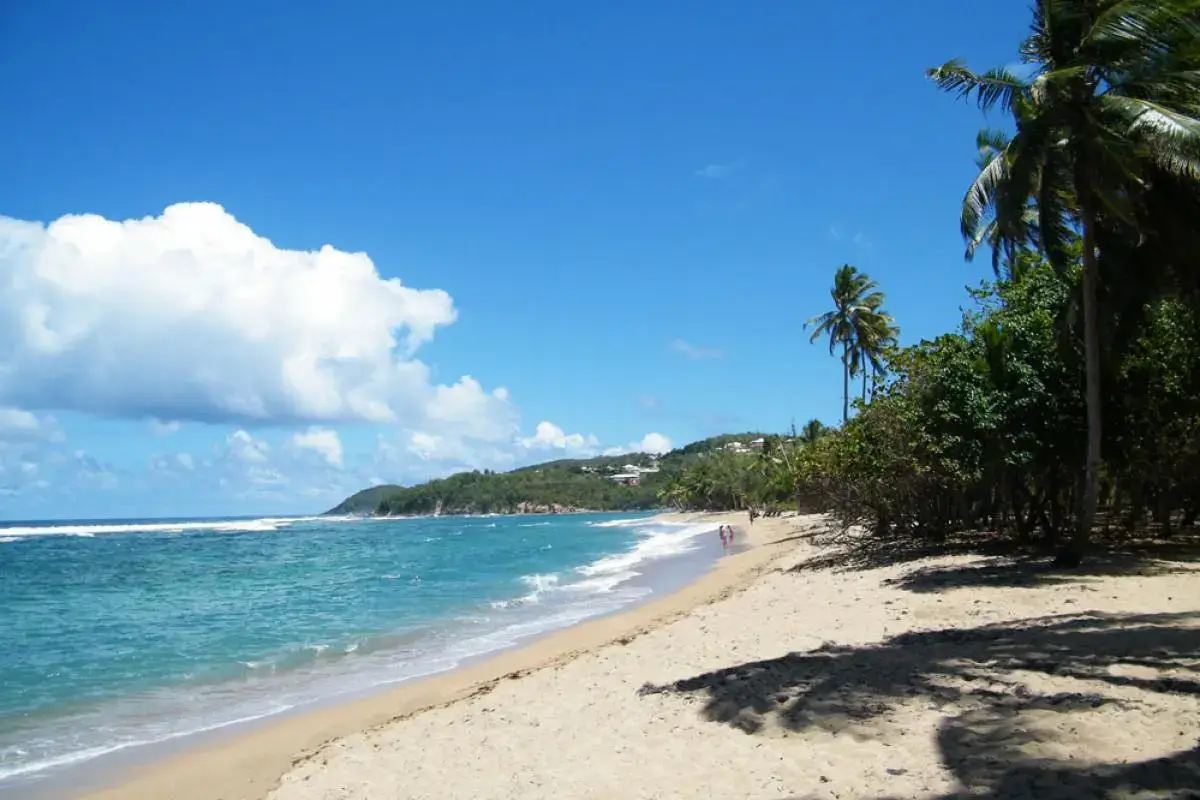
🏄 Anse l’Etang (Tartane Peninsula)
Skill Level: Intermediate to Advanced | Water Type: Waves and chop | Bottom: Reef | Launch: Beach
The Tartane Peninsula on Martinique’s northeastern coast offers a completely different experience from the southern lagoons. Anse l’Etang is where you go when flat water gets boring and you want to play in waves.
Wave Riding Potential: While Martinique isn’t primarily known as a wave destination, the exposed northeastern coast receives consistent Atlantic swell. Anse l’Etang features a reef setup that produces rideable waves for kitesurfing. On good days, you’ll find shoulder-to-head-high waves with decent shape for practicing your bottom turns and aerials.
The spot works best with moderate to strong trade winds (18-25 knots) that blow slightly offshore to side-offshore. This wind angle cleans up the wave faces and makes them more rideable. You’ll want a directional board here—trying to ride waves on a twin tip is possible but significantly less fun.
Technical Considerations: This is not a beginner spot. The reef is shallow in places, the waves can be powerful, and self-rescue skills are essential. You need to be comfortable riding in and launching/landing with shore break. The current can be strong on big swell days, pulling you down the coast if you’re not paying attention.
Why Advanced Riders Love It: Anse l’Etang offers something rare in Martinique: the chance to work on wave riding without traveling to a dedicated wave destination. The crowd factor is low—many kiters stick to the lagoons in the south—so you’ll often have waves to yourself or share them with just a handful of riders.
Access and Amenities: Tartane is a charming fishing village about 30 minutes north of François. The town has a few small restaurants, grocery stores, and accommodations. Beach access is straightforward, with parking near several launch points. Local surfers also use some of the breaks, so maintain good etiquette and share the lineup respectfully.
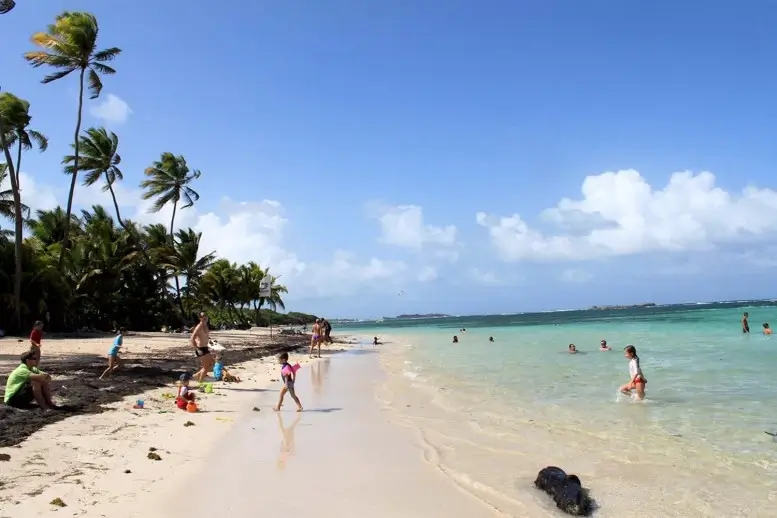
🏄 Baie des Anglais
Skill Level: Intermediate to Advanced | Water Type: Flat lagoon | Bottom: Sand | Launch: Boat access
Here’s where Martinique gets interesting. Baie des Anglais isn’t accessible by land—you need a boat to reach this pristine kite spot. Some kite centers, like Alizé Fun, offer boat trips to the Baie des Anglais spot.
The Private Island Experience: Spots accessible only by boat have no other kite schools in the area, meaning there are times you might have the whole spot to yourselves. This is dramatically different from the Pointe Faula experience. Imagine kiting in a deserted lagoon with crystal-clear water, perfect flat conditions, and maybe one or two other riders in sight.
The lagoon features shallow, warm water over sand. Wind is consistent since you’re offshore without land interference. It’s the kind of place where you can spend hours practicing tricks, improving your technique, or just enjoying pure freedom on the water.
Logistics and Cost: Booking a boat trip through a kite school is the only real option. Expect to pay a premium for this experience compared to land-based spots, but many riders find it worthwhile for the uncrowded conditions. Trips typically include transport, sometimes instruction if you want it, and several hours of riding time.
Bring everything you need for the session—there are no facilities, bathrooms, or shops once you’re dropped off. Pack water, snacks, sun protection, and maybe a dry bag with valuables.
Who Should Try It: Independent riders who are solid on their skills and don’t need coaching benefit most from boat-access spots. If you’re traveling with a group of kiter friends, splitting the boat cost makes it more reasonable. It’s also a phenomenal option for intermediate riders who find Pointe Faula too crowded but aren’t ready for the challenging conditions at wave spots.
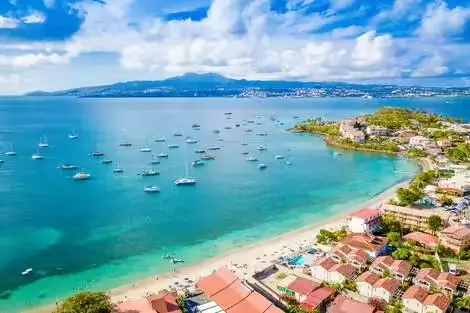
🏄 Les Trois-Îlets and Anse Mitan
Skill Level: Beginner to Intermediate | Water Type: Relatively flat bay | Bottom: Sand | Launch: Beach
The Bay of Fort-de-France on Martinique’s western coast offers alternative kitesurfing when you want something closer to the island’s main tourist infrastructure. Les Trois-Îlets and Anse Mitan provide decent kiting, though conditions aren’t as reliable as the southeastern spots.
Conditions and Characteristics: The bay receives wind, but it’s typically lighter and less consistent than the southeast coast. Expect 12-18 knots on average wind days, which means your bigger kite will get plenty of use. The water is relatively flat since the bay is protected from ocean swell, making it suitable for beginners and casual cruising.
One advantage is the proximity to resorts, restaurants, and nightlife. If you’re traveling with non-kiting companions, basing yourself here gives everyone more options. The area has a more developed tourism scene compared to the quieter fishing villages of the southeast.
Limitations: Don’t come to Martinique and spend your entire trip on the western coast. The wind is simply better on the Atlantic side. Think of Les Trois-Îlets as a backup option when wind forecasts look marginal, or as a convenient spot if you’re staying nearby. Serious kiters will be happier making the 30-40 minute drive to Pointe Faula or Cap Chevalier.
Kite Schools: Several schools operate in the bay, offering lessons in French and English. The mellower conditions make this area suitable for first-time lessons if you’re traveling with beginners who want to try kitesurfing.
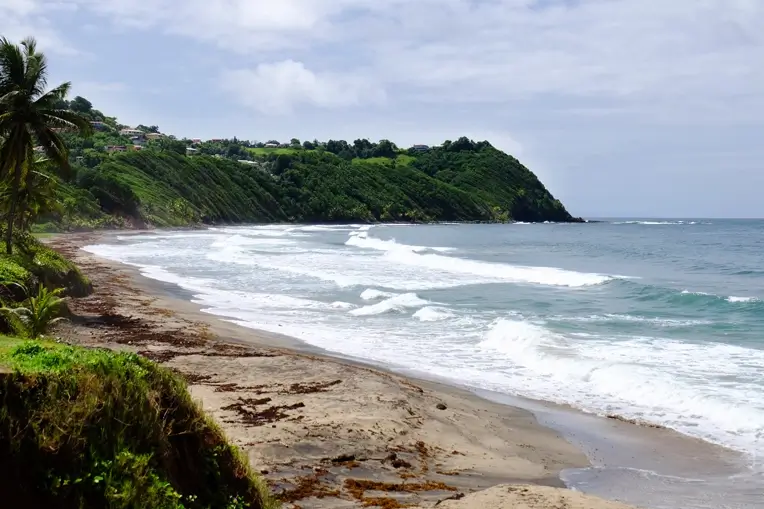
🏄 Anse Charpentier
Skill Level: Intermediate | Water Type: Mixed flat and chop | Bottom: Sand and patches of reef | Launch: Beach
Anse Charpentier sits between the beginner-friendly lagoons and the more challenging spots, making it ideal for intermediate riders working on progressing their skills.
What to Expect: The spot features a decent-sized riding area with a mix of flat sections and slightly choppy zones. Wind is generally good during the trade wind season, running at 15-22 knots consistently. The mixed water conditions let you practice in flat areas when you’re learning new tricks, then venture into the choppier sections when you want more challenge.
Local kiters use this spot regularly, so you’ll often find other riders on the water who can offer tips or assistance if needed. It’s less of a “scene” than Pointe Faula but not as isolated as some remote spots.
Skill Development: If you’ve progressed past the beginner stage at Pointe Faula but aren’t ready for serious wave riding at Anse l’Etang, Anse Charpentier provides the perfect middle ground. It’s great for working on upwind riding, board-offs, jumps, and building confidence in varied conditions.
Practical Details: Access is straightforward via local roads. Parking is available, though facilities are minimal—bring your own water and snacks. The beach has a mix of locals and tourists, creating a friendly, laid-back atmosphere.
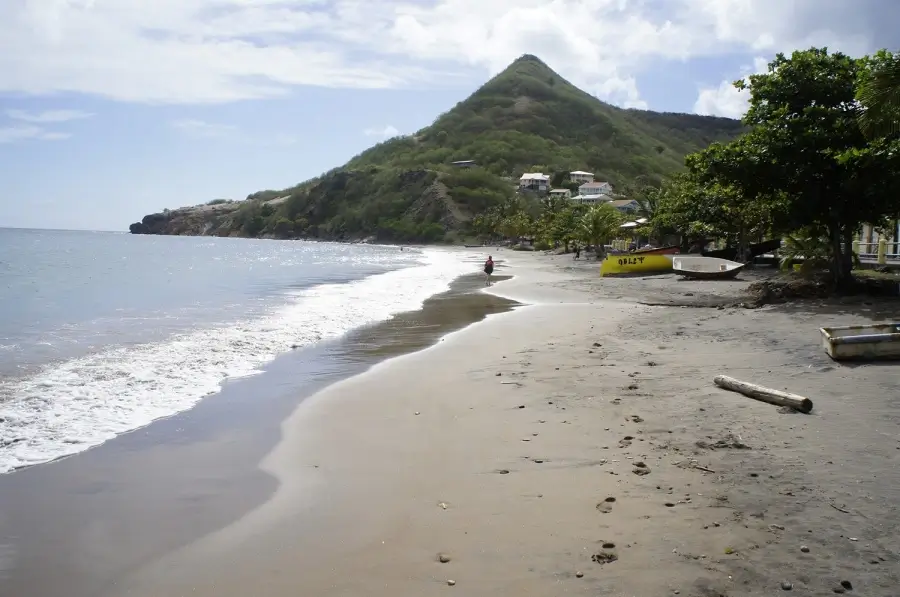
🏄 Petite Anse and Grande Anse des Salines
Skill Level: Intermediate to Advanced | Water Type: Variable | Bottom: Sand | Launch: Beach
The Salines area at Martinique’s southern tip is famous for spectacular beaches, and it offers some kitesurfing opportunities for those who know when and where to ride.
The Beauty Factor: These beaches rank among the most beautiful in the Caribbean—think coconut palms leaning over white sand, turquoise water, and that classic tropical paradise aesthetic. Grande Anse des Salines especially draws tourists for beach days and sunset views.
Kitesurfing Realities: Wind can be variable here. The southern location means you’re slightly out of the prime trade wind zone. On good days, you’ll get 15-20 knots, but consistency isn’t guaranteed. Many kiters visit these beaches for the scenery and swimming rather than serious kite sessions.
If conditions align—decent wind, not too many swimmers—you can have magical sessions in stunning surroundings. Just don’t make this your primary kite spot for a Martinique trip. Consider it a bonus if everything lines up.
Respect Beach Rules: These beaches are popular with families and tourists. If you do kite here, maintain safe distances from swimmers, follow any posted regulations, and be extra cautious during launches and landings. The local authorities prefer keeping designated kite zones separate from main swimming beaches.
Kitesurfing Conditions by Month
Understanding monthly wind patterns helps you time your Martinique trip perfectly:
December – Season Startup
Wind: 12-20 knots | Consistency: 60-70%
The trade wind season begins, but conditions can still be variable. Early December especially may have calm days between windy periods. Budget travelers can find deals during this shoulder season.
January – Reliable Conditions Arrive
Wind: 15-22 knots | Consistency: 75-85%
Conditions stabilize nicely in January. You’re getting into the heart of the season with reliable wind most days. Water and air temperatures are perfect—not the peak heat of summer but comfortably warm.
February – Prime Time
Wind: 16-24 knots | Consistency: 80-90%
February delivers some of the best kitesurfing of the year. Trade winds blow consistently, conditions are dialed, and you’ll have multiple spots working simultaneously. This is peak season, so expect higher accommodation prices and more kiters on the water.
March – Excellent All-Around
Wind: 16-24 knots | Consistency: 80-90%
Similar to February with outstanding consistency. March is my personal favorite month—wind is reliable, the season crowds thin slightly after February school holidays end, and the ocean is warm.
April – Still Going Strong
Wind: 15-22 knots | Consistency: 75-85%
Conditions remain excellent through April. You might encounter slightly more variable days than February-March, but overall it’s still prime kitesurfing season. Prices may drop slightly as peak season winds down.
May – End of Season
Wind: 14-20 knots | Consistency: 65-75%
The trade winds start weakening in May. You’ll still score good days, but expect more periods of light or no wind. This can work well for riders who want to balance kitesurfing with other island activities.
June – Season’s End
Wind: 12-18 knots | Consistency: 50-60%
Wind becomes increasingly unreliable as hurricane season approaches. Some years offer rideable conditions through June, others see the wind die early. Book this month only if you’re flexible and okay with potentially limited kiting.
July-November – Off Season
Wind: Variable, often calm | Hurricane risk
Skip these months for kitesurfing. The reliable trade winds disappear, rain increases, and hurricane risk makes trip planning risky.
Kite Schools and Lessons
Whether you’re learning from scratch or want to upgrade your skills, Martinique has quality instruction available:
For Beginners
Kite Sensation at Pointe Faula offers comprehensive beginner courses in the perfect learning environment. Instructors are IKO certified, equipment is well-maintained, and the shallow lagoon is ideal for first lessons. Expect to spend 3-4 days of lessons to become independent on the board.
Alizé Fun at Anse Michel provides instruction plus the option for boat trips to less crowded spots once you’ve got basics down. Their instructors speak French and English, understanding that clear communication is crucial when learning kitesurfing.
For Intermediate Progression
If you’re past the beginner stage and want coaching on jumps, transitions, or specific tricks, several schools offer private lessons tailored to your goals. These sessions focus on video analysis, safety refinement, and skill progression rather than basic instruction.
Equipment Rental
Most kite schools rent gear to independent riders. Daily rental rates are reasonable, and it’s worth considering if you’re trying to save on baggage fees by not bringing your own equipment. Rental packages typically include kite, bar, board, harness, and sometimes a wetsuit vest for protection.
Pro tip: If renting, inspect everything carefully before taking it out. Check line wear, kite condition, and board dings. Reputable schools maintain their rental fleet well, but it’s worth a thorough check to avoid mid-session equipment failures.
Safety Considerations and Local Rules
Martinique is generally safe for kitesurfing, but understanding local conditions and regulations keeps you out of trouble:
Understanding Reef Hazards
Beginners can be challenged by rocks and coral, not just wind conditions. The coral reefs that create perfect lagoons can also cause serious injuries if you crash onto them. Key safety points:
- Reef booties are essential – The 3-4mm neoprene protects your feet from coral cuts and sea urchins
- Learn self-rescue before riding reef spots – Know how to safely get yourself and gear back to shore without standing on coral
- Respect the locals’ advice – If a kite school instructor or local rider tells you to avoid an area, listen
Weather Awareness
Tropical weather can change quickly. Watch for:
- Squalls – Brief intense rainstorms that can bring sudden wind shifts and reduced visibility
- Lightning – If you see lightning, get off the water immediately
- Changing tides – Some spots work better on certain tides; ask locals about timing
Right of Way and Beach Etiquette
Standard kitesurfing right-of-way rules apply:
- Rider on starboard tack (right hand forward) has priority
- Upwind rider gives way to downwind rider
- Rider entering water yields to those already riding
- Give swimmers and boats wide berth
- Launch and land away from beach areas with people
Emergency Services
Martinique has good medical facilities, especially around Fort-de-France. However, kite-specific rescue services aren’t as developed as some destinations. Mastering self-rescue is essential before venturing into more remote or challenging areas.
Keep these numbers saved:
- Emergency: 112
- Marine rescue: 196
- Local hospital in Fort-de-France: +596 596 55 20 00
Beyond Kitesurfing
Martinique offers incredible experiences beyond the water:
French-Caribbean Cuisine
The island’s food scene blends French technique with Caribbean ingredients and African influences. Don’t miss:
- Accras – Salt cod fritters, crispy outside and fluffy inside, perfect with ti-punch
- Colombo – Curry-spiced dishes (chicken, goat, or fish) with complex flavors
- Fresh seafood – Grilled mahi-mahi, red snapper, and lobster caught locally
- Bokit – Fried bread sandwiches stuffed with meat, cheese, and vegetables
- Ti-punch – The local rum cocktail (agricole rum, lime, cane syrup)
Exploring the Island
On down days or rest days, explore beyond the kite beaches:
Mount Pelée – The volcano that destroyed Saint-Pierre in 1902. Hiking to the summit offers spectacular views and passes through cloud forest ecosystems.
Les Gorges de la Falaise – River canyoning and hiking through lush tropical jungle. It’s a cool escape from beach heat.
Saint-Pierre – The former capital, known as the “Little Paris of the Caribbean” before the volcano erupted. Fascinating ruins and history.
Rum Distilleries – Martinique produces world-class agricole rum (made from sugarcane juice rather than molasses). Tours and tastings at distilleries like Clement, Neisson, or HSE are educational and delicious.
Local Markets – Fort-de-France’s market bursts with tropical fruits, spices, handicrafts, and the energy of daily Caribbean life.
Where to Stay
Your base location significantly impacts your Martinique kitesurfing experience:
Le Vauclin – Heart of Kite Country
Staying in or near Le Vauclin puts you within minutes of Pointe Faula and a short drive from Cap Chevalier and other southeastern spots. The town itself is authentically Caribbean—fishing boats, local restaurants, and not heavily touristed. Accommodation ranges from simple guesthouses to comfortable vacation rentals.
Best for: Serious kiters who want maximum water time and don’t need resort amenities.
Sainte-Anne – Beach Town Convenience
This southern town offers more infrastructure than Le Vauclin while still providing good access to multiple kite spots. You’ll find restaurants, grocery stores, car rental agencies, and more developed beaches. The town has tourist traffic but maintains Caribbean character.
Best for: Mixed groups with kiters and non-kiters, families, or those wanting more activity variety.
François – Authentic Village Vibes
Between Le Vauclin and Sainte-Anne, François is a working fishing village with real local culture. Limited tourist development means lower prices and authentic experiences. Accommodations tend toward local guesthouses and small hotels.
Best for: Budget travelers and cultural explorers who want authentic Caribbean life.
Les Trois-Îlets – Resort Area
If you’re booking a package deal or want full resort amenities (pools, spas, organized activities), this western coast area has the most options. However, you’ll spend time driving to the best kite spots.
Best for: First-time Caribbean visitors who want resort comfort and aren’t focused exclusively on kitesurfing.
Vacation Rentals
Airbnb and VRBO offer numerous options across the island. Renting a house or apartment with a kitchen saves money on meals and provides more authentic living. Many rentals cater specifically to kitesurfers with secure gear storage and outdoor showers for rinsing equipment.
Getting Around
Renting a Car
A rental car is essential for maximizing your Martinique kitesurfing trip. Public transportation exists but doesn’t serve many kite spots conveniently. Roads are well-maintained, driving is on the right side, and navigation is straightforward.
Booking Tips:
- Reserve in advance during peak season (February-March)
- Smaller cars handle the winding coastal roads better than large SUVs
- Ensure your rental has adequate cargo space for kite gear
- Check if your credit card covers rental car insurance in international territories
Driving Considerations
- Speed limits are posted in km/h
- Coastal roads can be winding with limited overtaking opportunities
- Mountain roads to northern attractions require careful driving
- Gas stations aren’t everywhere—fill up in larger towns
Getting to the Island
Martinique Aimé Césaire International Airport (FDF) in Fort-de-France receives flights from:
- France – Direct flights from Paris Orly (8-9 hours)
- North America – Connections through Miami, San Juan, or other Caribbean hubs
- Caribbean – Inter-island flights from neighboring destinations
Some kiters combine Martinique with Guadeloupe (30-minute flight) for an extended Caribbean kitesurfing journey.
Share Your Experience
If you found this guide useful, I’d love to hear from you: which spot are you hoping to ride in Martinique? Or if you’ve already been, what was your favourite beach and why? Share your story below—and don’t forget to spread the stoke by sharing this guide with fellow riders!
